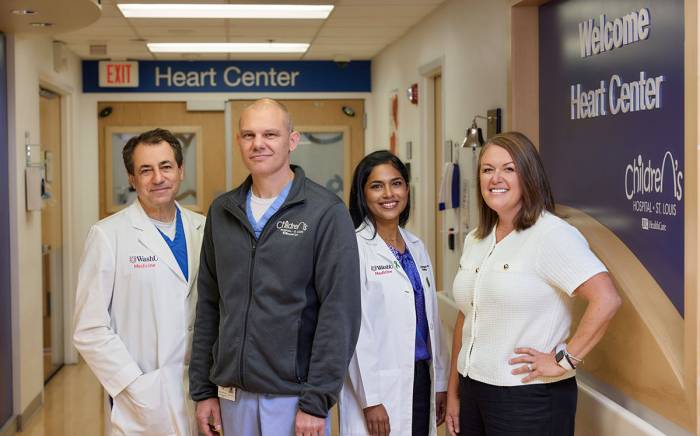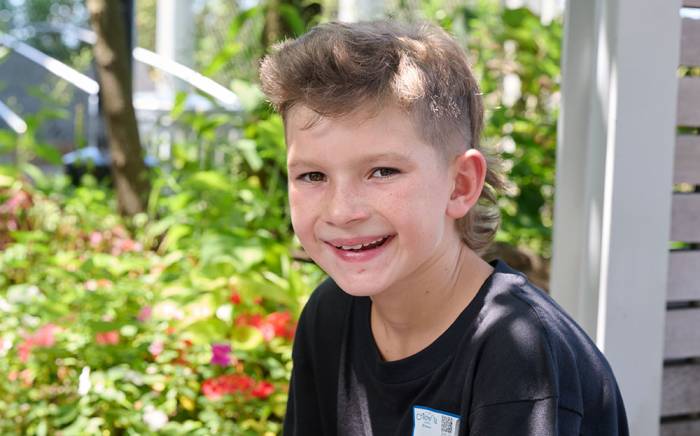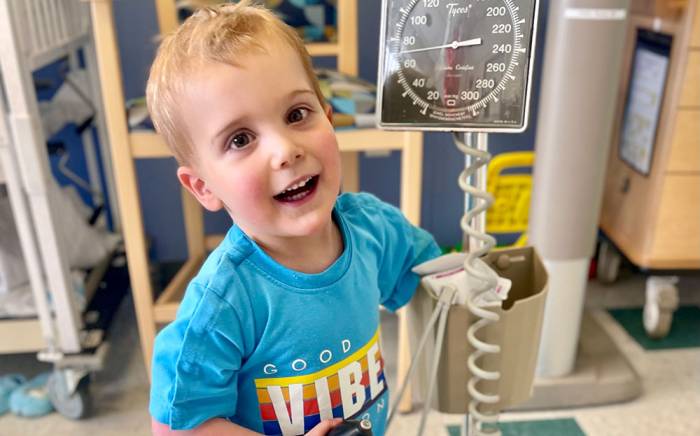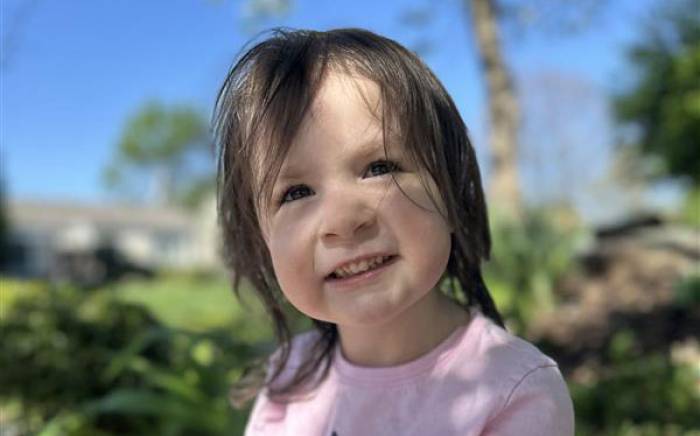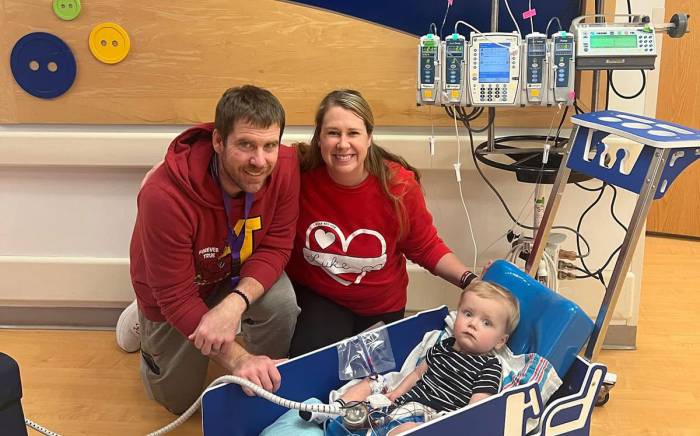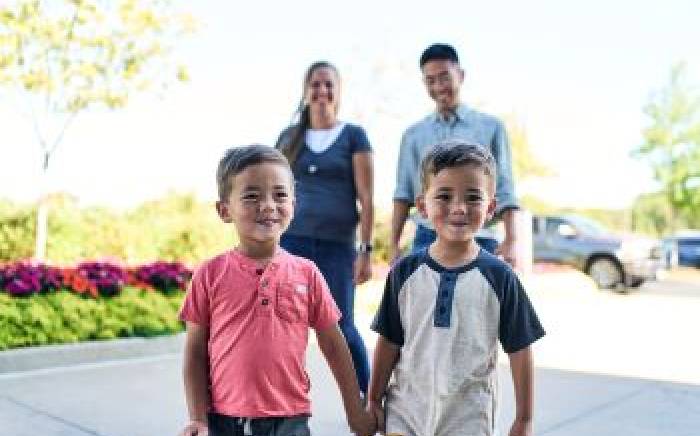 Kim Jacques recalls being a member of a very exclusive club as a teenager.
Kim Jacques recalls being a member of a very exclusive club as a teenager.
In spring 1996, a group of teenagers waited together in St. Louis. Boys and girls, from different areas of the country, they had one thing in common – they were on the list for organ transplants at St. Louis Children’s Hospital. Several needed donor lungs. Kim, who was 16 at the time, not only waited for lungs, but also for a donor heart.
Though the health issues that brought them together were something they and their families would gladly have done without, the teens did their best to keep life normal while getting to know each other and sharing a camaraderie few others their age could understand. Kim feels lucky to have been a member.
“We bonded and provided a support group for each other,” she says.
That was important to someone who had to fight for every breath and every heartbeat since birth.
A rough start, a rare syndrome
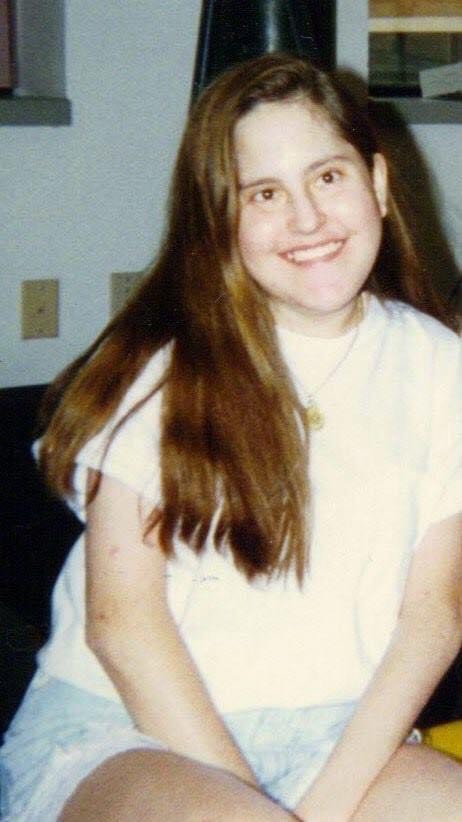
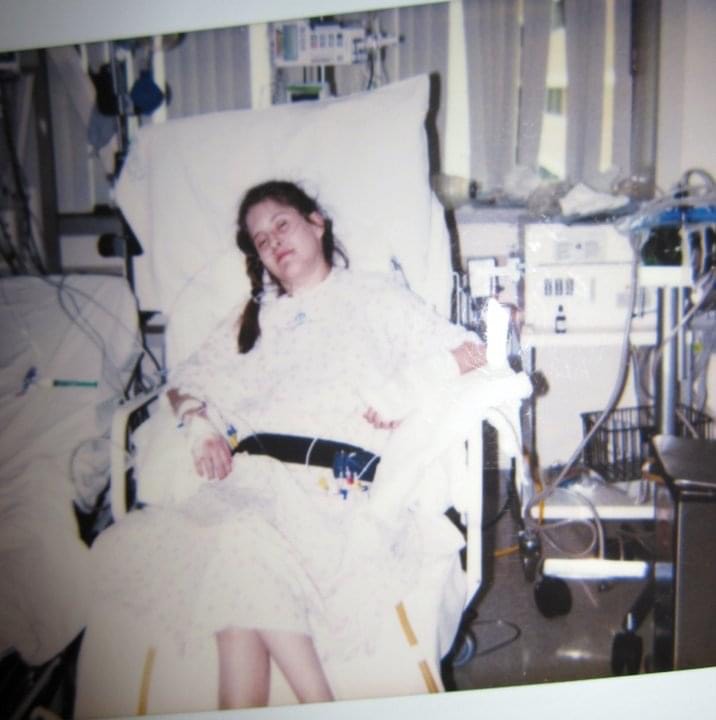 As a 29-week preemie in Boston, Kim spent weeks in a neonatal intensive care unit. Among her medical issues was a congenital heart defect that kept her blood from circulating efficiently. Later, she was diagnosed with Eisenmenger syndrome, a condition where the inefficient pumping of her heart raised the blood pressure in her lungs, damaging the delicate tissue.
As a 29-week preemie in Boston, Kim spent weeks in a neonatal intensive care unit. Among her medical issues was a congenital heart defect that kept her blood from circulating efficiently. Later, she was diagnosed with Eisenmenger syndrome, a condition where the inefficient pumping of her heart raised the blood pressure in her lungs, damaging the delicate tissue.
After years of doctor visits and medications, Kim, then age 14, and her parents were told she would need a heart/lung transplant to survive.
Kim’s cardiologist sent her records to several transplant centers around the country. St. Louis Children’s Hospital was one of the few centers willing to take on her complicated case. With a heart transplant program begun in 1986 and a lung transplant program started in 1990, both in partnership with Washington University School of Medicine, Children’s also was one of the few pediatric transplant centers with the expertise and experience to successfully perform such a high-risk procedure.
Meeting Children’s “transplant teens”
In December 1994, Kim came to be evaluated by the Children’s transplant team. She returned every six months to see how quickly her condition deteriorated. In April 1996, Kim, her parents and two younger sisters moved from their Tampa home to St. Louis to wait for a donor heart and lungs. It was then, she met the other “transplant teens.”
Between clinic visits and daily physical therapy sessions, the group grew close. “We learned from each other what the transplant process was about,” Kim says. “We were very protective of each other.”
And they took advantage of opportunities to celebrate. In fact, Kim and her family were attending a going-away party for a fellow patient returning home after a successful transplant when the pager went off to let them know a donor match had been found for Kim.
“It was so loud there that my Dad didn’t even hear it go off the first time,” laughs Kim.
The next morning, she rolled into surgery for a 10-hour operation to receive a new, healthy heart and lungs. Her parents visited her after surgery in the Children’s ICU. Though Kim was in a medically induced coma, her parents knew by looking at her that the surgery had been successful.
“I was pink,” says Kim. “They had never seen me pink before. I was always kind of blue or gray.” Her color signaled that her new heart was pumping efficiently, and her lungs were oxygenating her blood.
After initially feeling “like I was hit by a truck,” Kim recovered quickly. She was discharged from the hospital after only 13 days. Her biggest adjustment, she says, was learning to change her way of thinking, of learning how to live and maintain a healthy lifestyle and learning not to fall into unhealthy habits.
She and her parents spent the summer in St. Louis as the staff monitored her conditions and adjusted her medications, before they returned to Florida that September.
Living a normal life
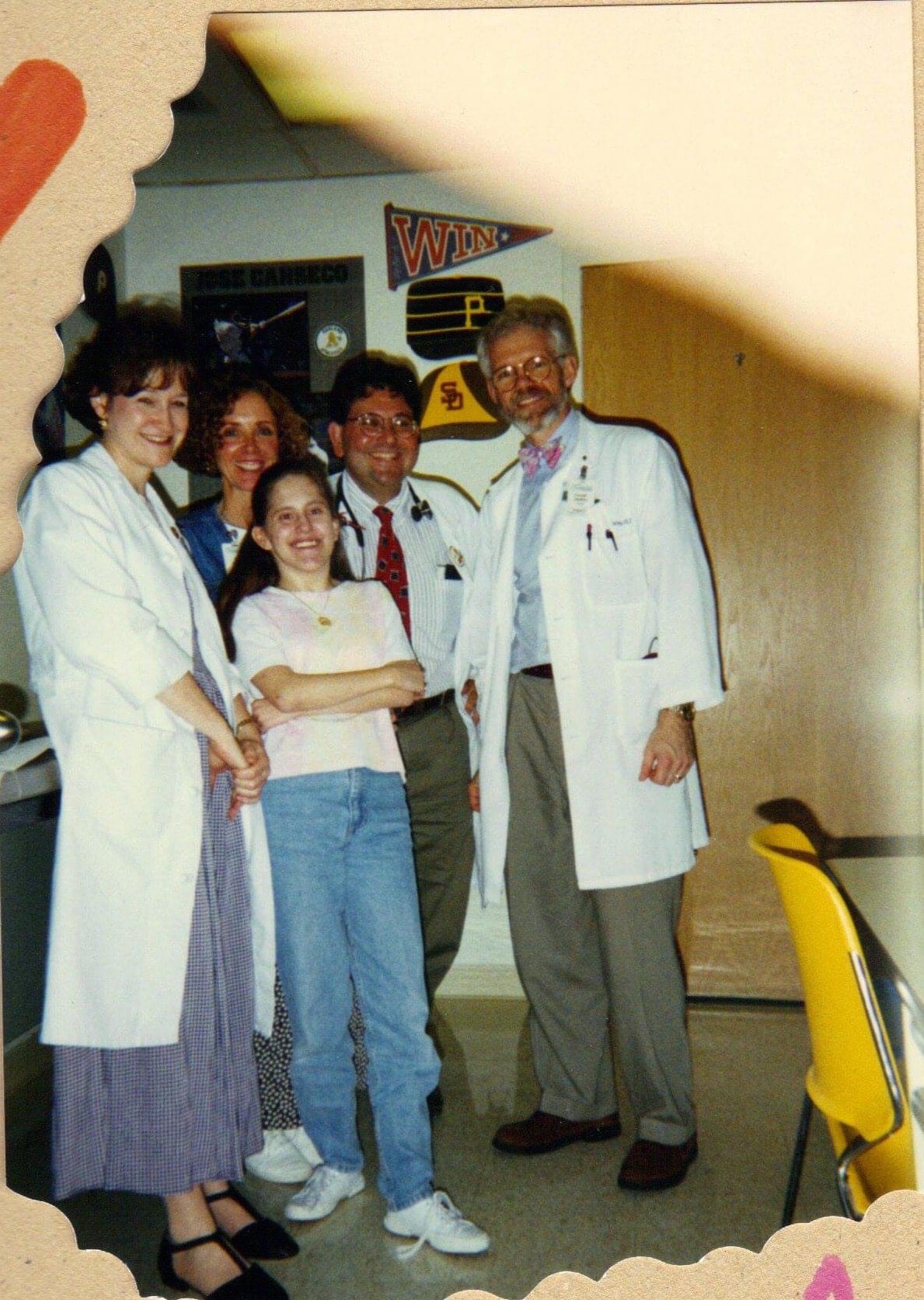 Other than battling a bout of organ rejection just before the tenth anniversary of her transplant, Kim has been healthy. She’s taken an active role in the transplant community, mentoring other transplant patients and becoming involved in the Transplant Games of America (TGA). In addition to participating as an athlete, she’s acted as the southern region advisor to the TGA board.
Other than battling a bout of organ rejection just before the tenth anniversary of her transplant, Kim has been healthy. She’s taken an active role in the transplant community, mentoring other transplant patients and becoming involved in the Transplant Games of America (TGA). In addition to participating as an athlete, she’s acted as the southern region advisor to the TGA board.
After months of strictly quarantining during the COVID-19 pandemic, she’s looking to returning to her normal life — and celebrating the 25th anniversary of her transplant.
“Sometimes,” she says, “I just think – how the heck has it been 25 years?”
How things have — and haven’t — changed
Though she hasn’t been back to St. Louis Children’s Hospital in several years, Kim still has strong memories of the doctors, transplant nurse coordinators and fellow teenage transplant patients. And some of them still have memories of her.
Stuart Sweet, MD, PhD, was a third-year pulmonary fellow at Children’s when Kim was a patient and joined the Washington University School of Medicine faculty later that year. Now the W. McKim Marriott professor of pediatrics and medical director of the Children’s lung transplant program, he remembers Kim and the group of “transplant teens” who came together in St. Louis that spring and summer.
“The camaraderie and shared support Kim describes is quite accurate,” he says. “We uproot families because patients need to be close to St. Louis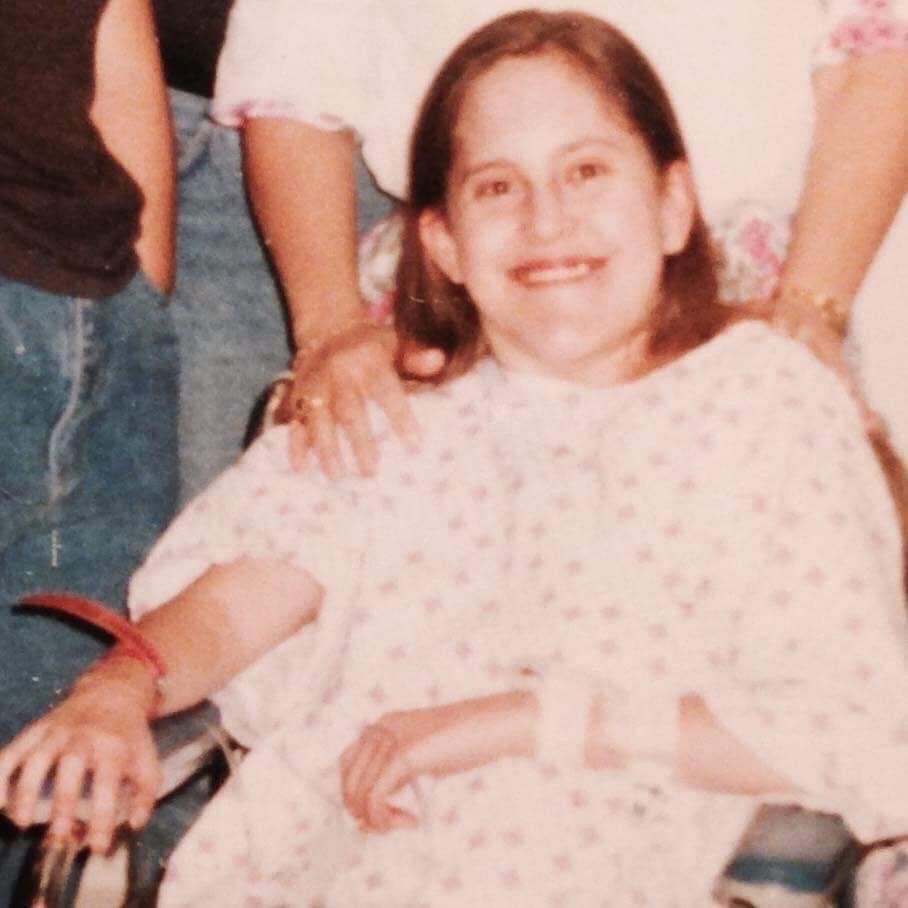 Children’s Hospital due to the uncertainty of the timing of organ availability and the need for closely monitoring the patients while waiting.
Children’s Hospital due to the uncertainty of the timing of organ availability and the need for closely monitoring the patients while waiting.
“Although the waiting groups aren’t as big now – children who need lung and heart-lung transplants have more options today – the need for and benefit of shared support still exists.”
Stories like Kim’s motivate the staff to continue offering the best care possible to Children’s lung transplant patients and their families, Dr. Sweet says. “It’s always heartwarming to hear how patients we’ve transplanted as children have made the best of their opportunity and Kim is no exception, especially since many patients who have had lung or heart-lung transplants don’t get this far.”
“Kim is a tribute to the hard work and commitment of the many physicians, surgeons, nurses, and other team members who have contributed to the heart and lung transplant programs over the past 30 years,” says Dr. Sweet. “They share my congratulations and best wishes to Kim for continued good health.”

